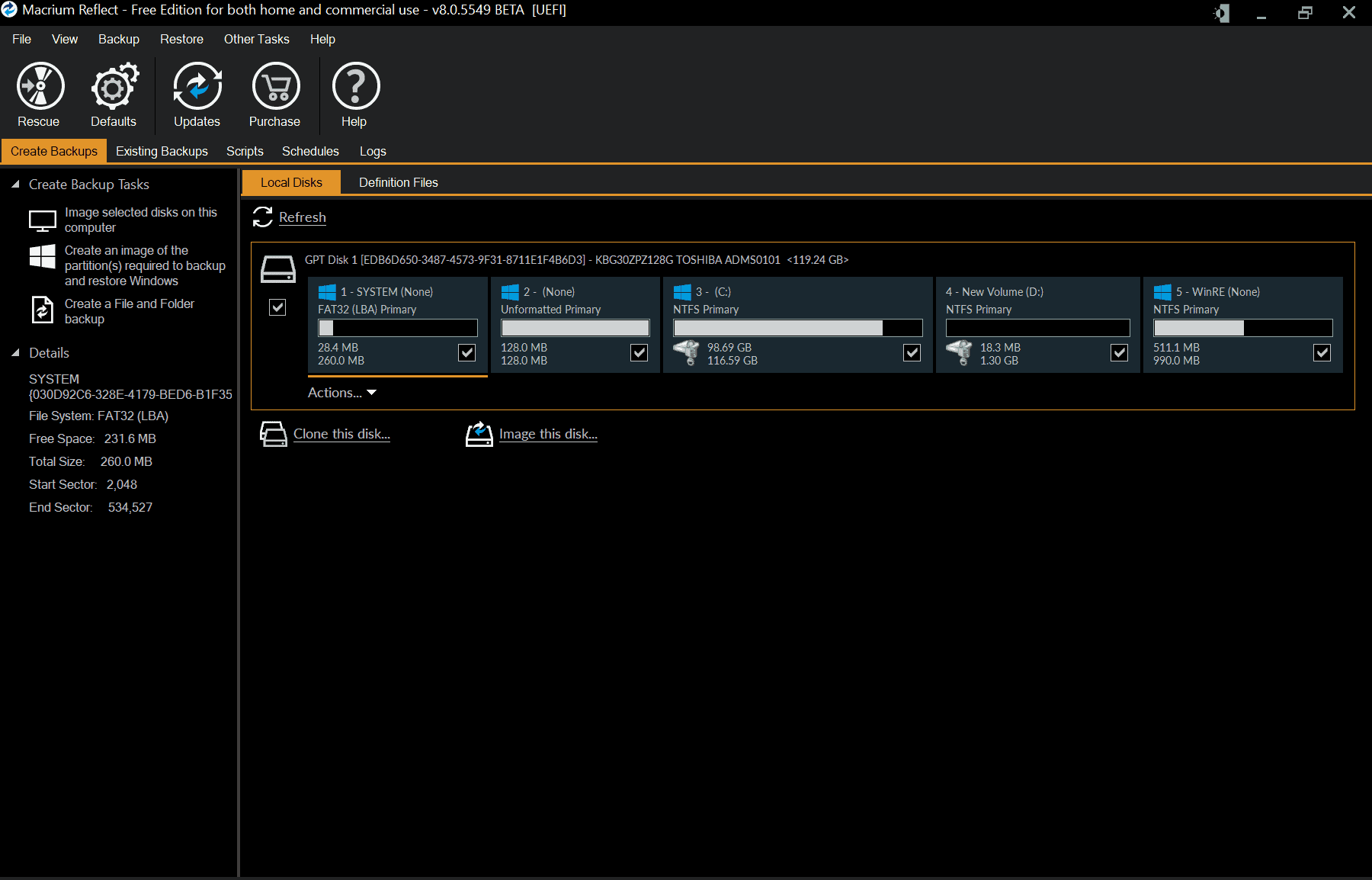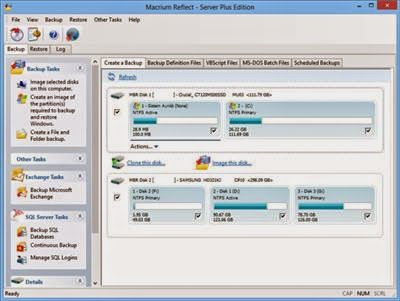
Step #3: Select the OS partition just moved to the unallocated disk and on the "Restored partition properties" LINK. Step #2: drag your "System drive (C)" partition to the unallocated disk.

Step #1: drag your "Healthy EFI system partition" to the unallocated disk. You must select each partition separately on the DESTINATION volume and use the "Delete existing partition" until the entire DESTINATION volume is unallocated (this doesn't happen until you actually finalize the RESTORE operation. Take NOTE of the size of the previously unallocated area you now want your OS partition to use. In my case I first cloned a PC with all the applications needed, a copy of that clone was placed on a file server and via a bootable USB with Macrium on it i was able to retrieve a copy of that clone over the network on over 200 PCs.It's tricky but it can be done (assuming you have the (3) partitions you mentioned above in your image).ĭuring the RESTORE operation (not afterwards), after you've selected the image you want to restore and said "Restore Image," you'll see your DESTINATION (or Target) disk with your previously imaged partitions on it. The Windows Explorer to recover Files and Folders using the Copy and Paste method. One can also mount images as a virtua drive in Recover a system if it somehow breaks down.

To restore the exact image of your hard disk so that one can upgrade the hard disk or else With the use of this software the user can backup a whole partition or individual filesĪnd folders which are presented as a compressed mountable file. To restore the entire disk, any particular partitions, or even individual files and folders. Partial loss, or when a whole system is lost, one can use the image taken in order


The software itself creates an image of a hard disk or any partitions. Macrium Reflect is an image based backup and cloning software.


 0 kommentar(er)
0 kommentar(er)
